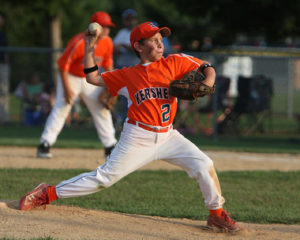 In an effort to help prevent youth pitching injuries the American Sports Medicine Institute has posted their Position Statement for Youth Baseball Pitchers. The three major factors which is a primary cause of most youth pitching injuries is; overuse, poor mechanics and poor physical fitness as mentioned in this statement. In my own research, I find this to be the case in all levels of the game. It is just more important at the youth level.
In an effort to help prevent youth pitching injuries the American Sports Medicine Institute has posted their Position Statement for Youth Baseball Pitchers. The three major factors which is a primary cause of most youth pitching injuries is; overuse, poor mechanics and poor physical fitness as mentioned in this statement. In my own research, I find this to be the case in all levels of the game. It is just more important at the youth level.
The ASMI Position Statement also mentions that the use of the curveball at the youth level may be an issue but no research exactly shows why. ASMI states that the problems could be that throwing a curveball enhances the effects of the three major factors of primary injury for youth pitchers. Here is a list of their recommendations for preventing injury.
ASMI Injury Prevention in Youth Pitchers
- Watch and respond to signs of fatigue. If a youth pitcher complains of fatigue or looks fatigued, let him rest from pitching and other throwing.
- No overhead throwing of any kind for at least 2-3 months per year (4 months is preferred). No competitive baseball pitching for at least 4 months per year.
- Do not pitch more than 100 innings in games in any calendar year.
- Follow limits for pitch counts and days rest. (Example limits are shown in the table below.)
- Avoid pitching on multiple teams with overlapping seasons.
- Learn good throwing mechanics as soon as possible. The first steps should be to learn, in order: 1) basic throwing, 2) fastball pitching, 3) change-up pitching.
- Avoid using radar guns.
- A pitcher should not also be a catcher for his team. The pitcher-catcher combination results in many throws and may increase the risk of injury.
- If a pitcher complains of pain in his elbow or shoulder, get an evaluation from a sports medicine physician.
- Inspire youth pitchers to have fun playing baseball and other sports. Participation and enjoyment of various physical activities will increase the youth's athleticism and interest in sports.
It is interesting that ASMI advises to learn good throwing mechanics to prevent arm injury but they never mention to use a strength and conditioning program to improve the poor physical fitness issues. The answer always seems to be just rest more or do not throw to much. I believe in pitch counts for all levels but we must stress the importance of a good strength and conditioning program for all levels, even the youth level as a key component to preventing injury.
The 3X Pitching Velocity program was developed for the mature pitcher but it also comes with the Beginners Guide to 3X Pitching which has a youth throwing and training program included.
| Age (yrs) | 2006 USA Baseball Guidelines | 2010 Little League Baseball Regulations |
| Daily limits | ||
| 17-18 | n/a | 105/day |
| 15-16 | n/a | 95/day |
| 13-14 | 75/game | |
| 11-12 | 75/game | 85/day |
| 9-10 | 50/game | 75/day |
| 7-8 | n/a | 50/day |
| Weekly limits | ||
| 13-14 | 125/wk; 1000/season; 3000/yr | |
| 11-12 | 100/wk; 1000/season; 3000/yr | |
| 9-10 | 75/wk; 1000/season; 2000/yr | |
| 7-18 | 21-35 pitches --> 1 day rest; 36-50 pitches --> 2 days rest; 51-65 pitches --> 3 days rest 66- pitches --> 4 days rest |
|



